JET’s acquisition of Grubhub hasn’t gone well. As takeaway delivery investors start demanding returns, is the market in trouble?
A “winning combination” is how Just Eat Takeaway.com (JET) CEO Jitse Groen described the addition of US food delivery rival Grubhub to his business in a £5.75bn deal in June last year.
The all share transaction, agreed a year earlier, was JET’s first entry into the US, giving it a presence in “four of the world’s most attractive markets in online food delivery”: the US, UK, Netherlands and Germany.
This week, JET chairman Adriaan Nühn stepped down hours before its annual meeting, bowing to investor pressure over the running of the business, including its dealmaking.
To make matters worse for the shares – which fell 7% the same day – it emerged JET was investigating a complaint about COO Jörg Gerbig’s personal conduct.
Nühn’s exit follows calls for JET to jettison Grubhub, which has been on a losing streak.
The acquisition was a “capital allocation mistake”, one of JET’s top five shareholders Cat Rock Capital told shareholders last month. It also claimed the company made “misleading financial disclosures” ahead of the shareholder vote on the deal and so “lost investor trust”.
Indeed, order numbers were “roughly flat” globally for JET, after being dragged down in the US by Grubhub’s 5% drop in order count. In its latest trading update, JET revealed it was “actively exploring the introduction of a strategic partner into and/or the partial or full sale of Grubhub”.
But are the woes limited to Grubhub? Or could this signal a coming struggle for the takeaway market now the pandemic boost is fading and the cost of living crisis is taking hold?
According to Cat Rock, JET’s move into the US was an “overreach”, representing “immaterial synergies from a cross-border transaction”. It “reduced JET focus on European core business”.
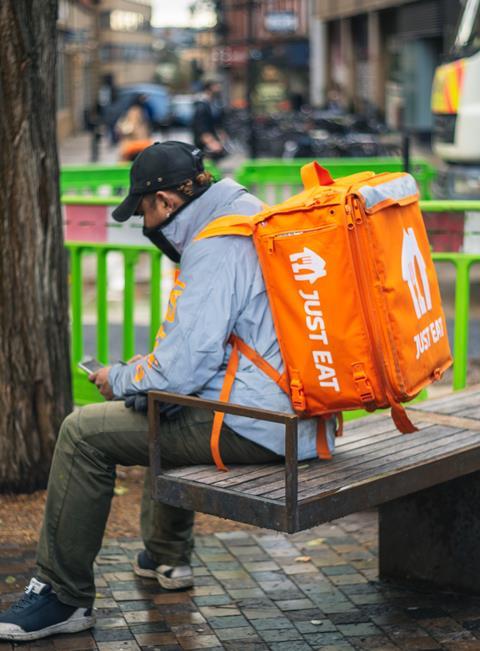
Despite JET being the market leader in the UK, Netherlands and Germany, Grubhub is only the third largest in terms of US market share (14% compared with Doordash’s 59% and Uber Eats’ 24%) according to Bloomberg Second Measure. Worse, its share has been eroded since early 2021, as rivals made gains.
“Grubhub is not capturing the stomachs of US delivery outside the New York metro area,” says Kantar senior director of digital commerce Celia Van Wickel. “They are also the only ones here in the US to not diversify their business outside of hot food takeaway.”
Profitability problem
“The sale,” Van Wickel adds, “is all about profitability and lack of growth. Grubhub has a very big problem with profitability and is losing market share.”
But it’s not just JET investors concerned about profitability. Even US leader DoorDash’s share price is down 67% since November last year. Deliveroo’s has dropped 61% in the past six months, and Delivery Hero’s 68%. And that’s despite most reporting an increase in orders.
“Profitability focus is the new theme of this market in 2022, which is causing stocks to be volatile and causing companies to evaluate their value and business models,” says Van Wickel. “Delivery companies are in a re-evaluation phase and reassessing growth opportunities.”
Online grocery consultant Viv Craske agrees. Investors are increasingly “asking to see a pathway to profitability” he says, which will “shift the focus from expansion”.
That could be a problem for the businesses. Having focused on scaling in multiple regions for years, they must now start showing the strategy pays.
At best, some are cautiously hopeful. Emmanuel Thomassin, CFO of Delivery Hero, said in February he expected its platform business “to generate a positive adjusted EBITDA this year” showing “our deliberate focus on scale and driving efficiency pays off”.
Doordash is reining in losses and is expected to report its first adjusted net profit this year.
Deliveroo said in March it had an “aim to reach 4%-plus adjusted EBITDA margin by 2026”.
And JET last month claimed it was “now rapidly progressing towards profitability” after a year of widening losses.
But long gone are the lockdown highs that saw new sign-ups and usage soar.
“Very likely, there will be a reduction in volume of orders due to the cost of living crisis,” says Craske.
A March survey by Braze found eight in 10 UK consumers planned to drastically reduce non-essential retail spending this year. Takeaways were “expected to suffer most” with 61% of respondents cutting back on them, the customer engagement tech company and Grubhub partner found.
“I would also keep an eye on subscriptions of the delivery platforms,” says Van Wickel. “We are seeing some trade-down in subscriptions such as Netflix.”
Spending patterns
But the tightening of consumer purse strings on takeaways hasn’t happened quite yet, indicates latest data from Barclaycard. “Despite the rising cost of living, Brits are still finding room in their budget for discretionary purchases,” says José Carvalho, Barclaycard head of consumer products.
Spending on takeaways and fast food was up 79.6% in March 2022 compared with before the pandemic three years earlier, “reflecting a lockdown trend which has become a mainstay for many households”. However, the crisis “may dampen growth in the months ahead”, Carvalho added.
In March, Deliveroo CEO Will Shu warned that thanks to inflationary pressures “coupled with interest rate rises, consumers will be operating under a different spending environment in the quarters ahead”.
“How this impacts consumer staples and discretionary categories, and where delivery of restaurant food and groceries fits into that environment is not clear yet,” Shu added.
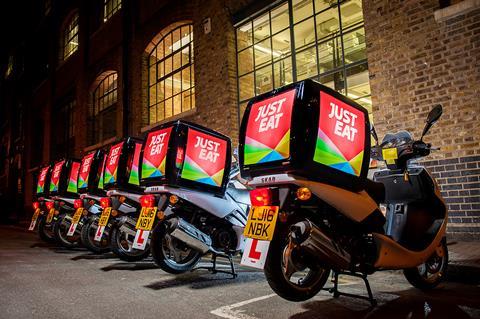
Xian Wang, VP edge retail insight at Edge by Ascential says: “We are yet to see exactly how people will react to increased living costs.”
Edge by Ascential forecasts the entire quick commerce sector – encompassing delivery intermediaries and ultra-rapid grocers – will grow at a CAGR of 19% until 2026. That’s significantly higher than the 11% forecast for overall e-commerce and the 4% for physical retail.
“These broad trends won’t change even with inflation headwinds and household price rises,” Wang says. But while “delivery platforms have really changed consumer behaviour for good” there are still “a lot of unknowns”.
What seems clear is turbulence lies ahead for the market.
“The courier market will adjust in many aspects to demand and profitability. There will be fire sales of companies,” says Van Wickel.
Craske expects “restaurant delivery companies to review again which markets they can win in, and then reduce offers and geographical expansion, and look at efficiency savings line by line”.
As Wang puts it: “All delivery intermediaries are not created equal and the landscape is changing fast.”







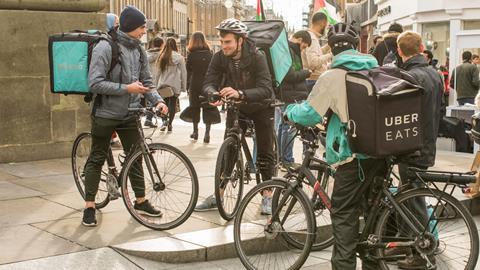
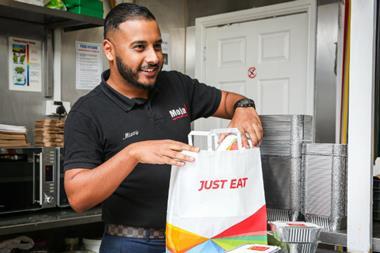

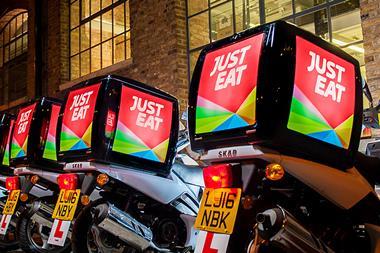
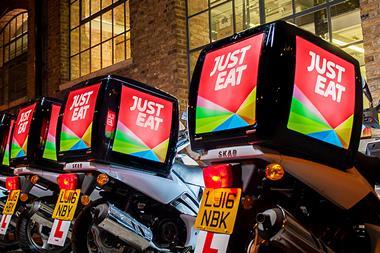








No comments yet